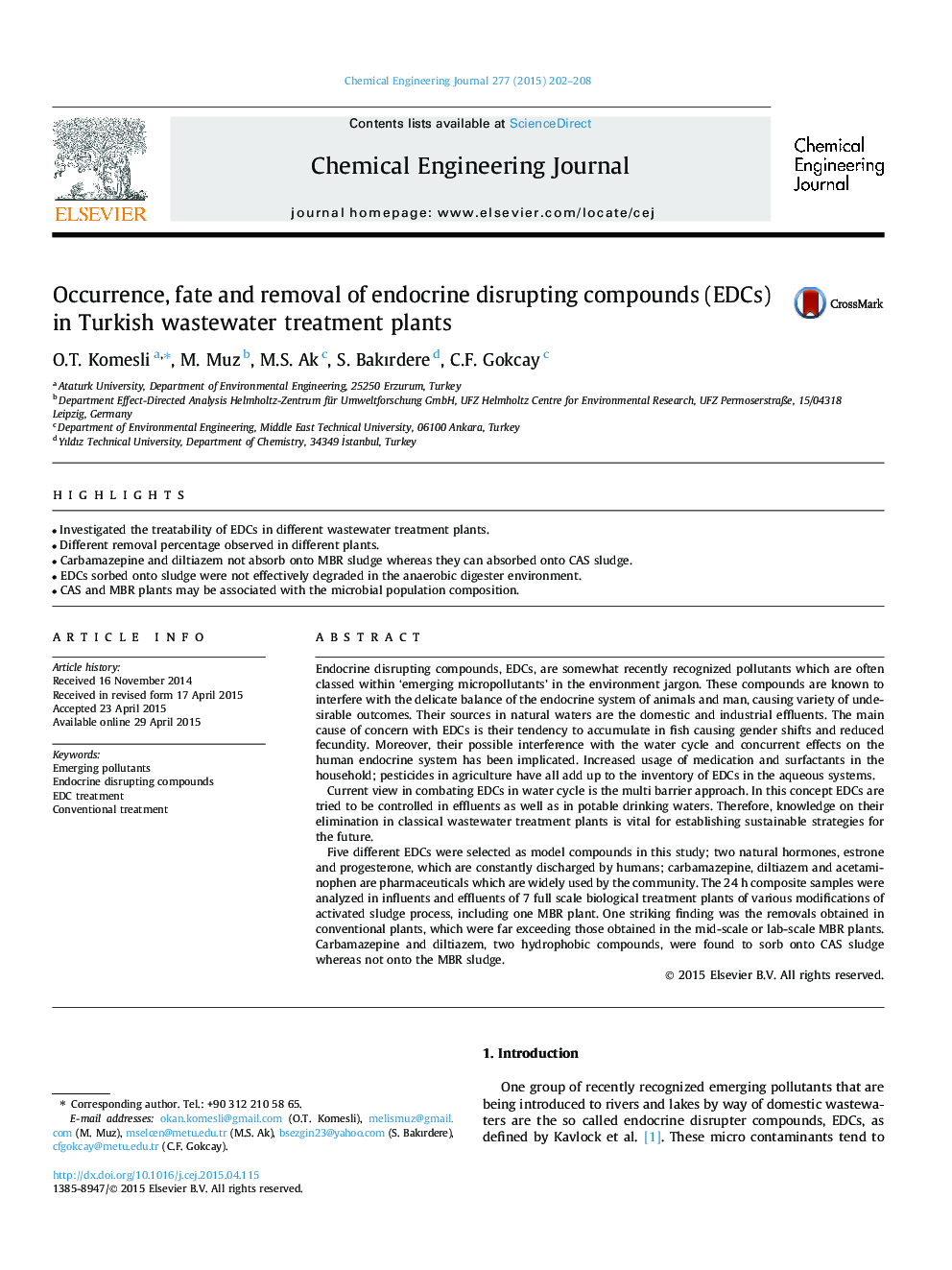| کد مقاله | کد نشریه | سال انتشار | مقاله انگلیسی | نسخه تمام متن |
|---|---|---|---|---|
| 146313 | 456367 | 2015 | 7 صفحه PDF | دانلود رایگان |

• Investigated the treatability of EDCs in different wastewater treatment plants.
• Different removal percentage observed in different plants.
• Carbamazepine and diltiazem not absorb onto MBR sludge whereas they can absorbed onto CAS sludge.
• EDCs sorbed onto sludge were not effectively degraded in the anaerobic digester environment.
• CAS and MBR plants may be associated with the microbial population composition.
Endocrine disrupting compounds, EDCs, are somewhat recently recognized pollutants which are often classed within ‘emerging micropollutants’ in the environment jargon. These compounds are known to interfere with the delicate balance of the endocrine system of animals and man, causing variety of undesirable outcomes. Their sources in natural waters are the domestic and industrial effluents. The main cause of concern with EDCs is their tendency to accumulate in fish causing gender shifts and reduced fecundity. Moreover, their possible interference with the water cycle and concurrent effects on the human endocrine system has been implicated. Increased usage of medication and surfactants in the household; pesticides in agriculture have all add up to the inventory of EDCs in the aqueous systems.Current view in combating EDCs in water cycle is the multi barrier approach. In this concept EDCs are tried to be controlled in effluents as well as in potable drinking waters. Therefore, knowledge on their elimination in classical wastewater treatment plants is vital for establishing sustainable strategies for the future.Five different EDCs were selected as model compounds in this study; two natural hormones, estrone and progesterone, which are constantly discharged by humans; carbamazepine, diltiazem and acetaminophen are pharmaceuticals which are widely used by the community. The 24 h composite samples were analyzed in influents and effluents of 7 full scale biological treatment plants of various modifications of activated sludge process, including one MBR plant. One striking finding was the removals obtained in conventional plants, which were far exceeding those obtained in the mid-scale or lab-scale MBR plants. Carbamazepine and diltiazem, two hydrophobic compounds, were found to sorb onto CAS sludge whereas not onto the MBR sludge.
Journal: Chemical Engineering Journal - Volume 277, 1 October 2015, Pages 202–208